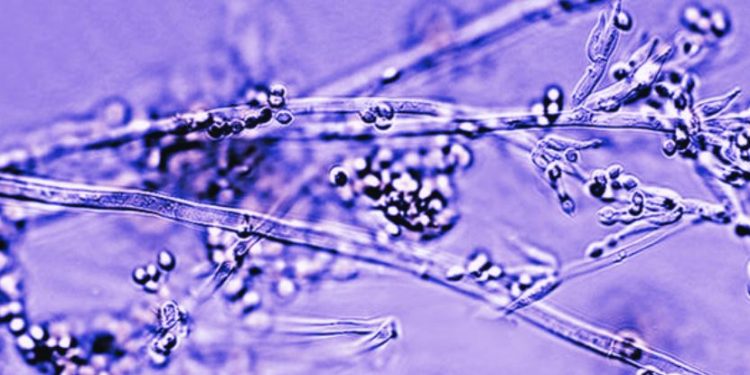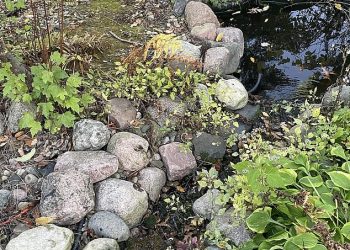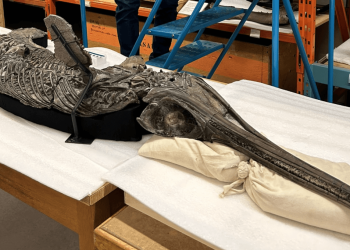Fungi are best known for returning dead organic matter to Earth, but materials scientists are studying whether they could one day help our bodies repair themselves, in the form of special hydrogels.
To play a role in biomedical contexts, a hydrogel needs a multi-layered structure like our own skin, cartilage and muscles. While some engineers are working on synthetic versions that mimic biology, scientists at the University of Utah have discovered a hydrogel that literally has a life of its own.
Marquandomyces marquandii is a common species of soil mold and a promising candidate for this position. This mushroom has experienced an identity crisis, being wrongly classified as Paecilomyces marquandii until he was reassigned to his own genre in 2020. Soon, he may be able to add the role of “bio-integrated hydrogel” to his resume.
Biointegrated hydrogels are created from organisms that we know form complex, cross-linked network structures that may be capable of replacing our own soft tissues.
“Hydrogels are considered a promising alternative for applications in tissue regeneration and engineering, cell culture scaffolds, cellular bioreactors, and wearable devices, due to their ability to faithfully mimic the viscoelastic properties of soft tissues,” writes lead author Atul Agrawal, an engineer at the University of Utah, and his collaborators.
Although we are more familiar with fungi and moldy fuzz, these are actually the reproductive parts of the organism. Mushrooms are primarily made up of a network of filaments called mycelium, usually hidden deep in the soil, wood, or old avocado at the bottom of your fruit bowl. It is this layered fibrous network that has made mushrooms such an exciting biomaterial to explore.
“As they grow, they lay down these cross walls that then compartmentalize a very long filament into a very large number of individual cells,” says mycologist Bryn Dentinger of the Utah Museum of Natural History. “They will grow forever as long as there is enough nutrition around… there are a lot of things we could exploit from these behaviors that haven’t really been fully explored.”
Other fungi have been tested for their potential as biomedical hydrogels, but they have often been found to be too brittle or dry out too quickly. This was not the case for M. marquandiiwhich, when grown using a stationary liquid fermentation method, forms a hydrogel capable of retaining up to 83 percent water.
“What you see here is a multilayered hydrogel,” says Agrawal, referring to one of the fungal colonies he grows in a glass vial filled with yellowish liquid culture medium.

frameborder=”0″allow=”accelerometer; autoplay; write to clipboard; encrypted media; gyroscope; picture in picture; web sharing” referrerpolicy=”strict-origin-when-cross-origin”allowfullscreen>
“It’s visible to the naked eye, and these multiple layers have different porosity. So the top layer has about 40 percent porosity, and then there are alternating bands of 90 percent porosity and 70 percent porosity.”
They suspect that these different layers resulted from changes in growth rate and strategy: for example, where the fungi reached the surface of the growth medium, their porosity was lowest, perhaps because they prioritized lateral growth. This means that scientists could modify growth conditions, such as oxygen supply and temperature, to optimize the hydrogel’s microstructure, depending on its potential use.
“This one in particular was able to grow these big, thick mycelial layers, which is what we’re interested in,” says Steven Naleway, a materials engineer at the University of Utah. “Mycelium is mostly chitin, which is similar to what you find in shells and insect exoskeletons. It’s biocompatible, but it’s also this highly spongy tissue.”
“In theory, you could use it as a template for biomedical applications or try to mineralize it and create a bone scaffold,” adds Naleway.
It will be a long time before your doctor can suggest mushroom peel as a treatment for burns or a mushroom-grown hip replacement. M. marquandii is not known to be harmful to humans, but animal studies suggest that chitin in molds could trigger rare allergic reactions.

On the other hand, M. marquandii can help some plants grow. Many more experiments will be needed to see how well these soil fungi can get along with living tissue – we can’t risk a scenario like this. The last of us.
“To the best of our knowledge, this is the first report of a mycelium species achieving such hydrogel-like properties under submerged growth conditions, positioning M. marquandii as a new and promising material for biomedical applications,” the team writes.
This research was published in The Journal of the Minerals, Metals and Materials Society.









